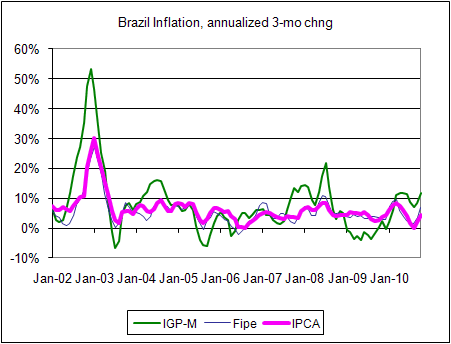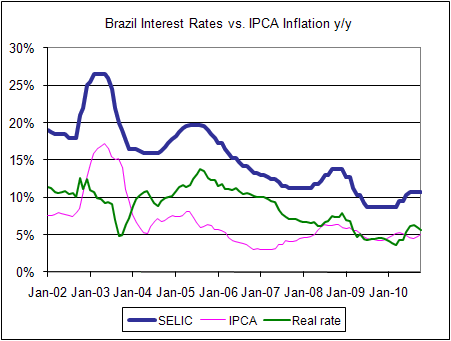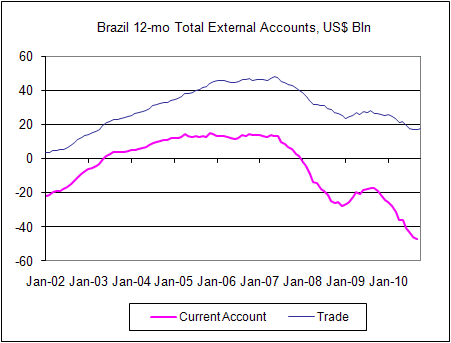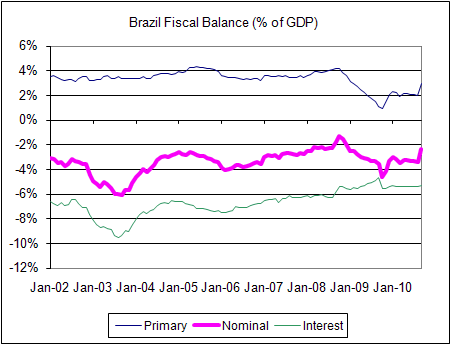Brazil Political Risks Are Picking Up
from earlier in the day by Win Thin
Brazil press is reporting that President-elect Rousseff may replace central bank chief Meirelles after she takes office January so that she can exercise greater control over monetary policy. We have been warning for quite some time that markets were too complacent about political risk under Rousseff, and we think we are likely to see a shift in Brazil risk assessment in the coming months. If Meirelles were to be replaced, we think it would be taken very negatively by the markets. Lula correctly kept a hands off approach to monetary policy during his administration, but markets will need confirmation from Rousseff that she will do the same. Brazil press is tipping BNDES President Coutinho as a possible replacement for Meirelles, which would be very problematic as monetary policy would get more politicized. Rousseff has already said that getting real interest rates down were a priority for her administration. We’ve pointed out in the past that there has been quasi-fiscal easing by development bank BNDES, which continued to lend aggressively at low interest rates even as the central bank tightened in 2010. BNDES’ long-term TJLP lending rate has been stuck at 6% since July 2009 despite 200 bp of hikes in the benchmark SELIC rate this year, and BNDES head Coutinho has downplayed talk that lending remains too strong.
If Coutinho ends up heading the central bank, easier monetary policy become more likely even though that’s the last thing Brazil needs right now. In order for rates to be cut, fiscal tightening would be needed and that seems unlikely given the steady deterioration seen in the fiscal numbers this past year. But with growth strong and fiscal policy loose, the need for rate hikes has increased as inflation data has deteriorated. October data so far show a sharp increase in price pressures and so we think tightening should restart in early 2011. At some point, the policy dilemmas building up will impact market sentiment, but for now, USD/BRL remains range-bound near 1.70. We continue to believe that other measures will be rolled out on any significant break towards 1.65. As a result, we think that the year’s low around 1.6440 is unlikely to be tested anytime soon given the increased Brazil risks, and so BRL may have to weaken a bit more above 1.70 before more bargain hunters emerge in force. We think BRL will remain in the 1.65-1.75 range over the near-term, with a bias towards the top end of 1.70-1.75. For now, markets will look to see how the new cabinet shapes up for clues to policy, with a focus on whether Finance Minister Mantega returns and also if other well-respected officials such as Bernardo and Palocci will remain market-friendly influences on the administration.




Comments are closed.